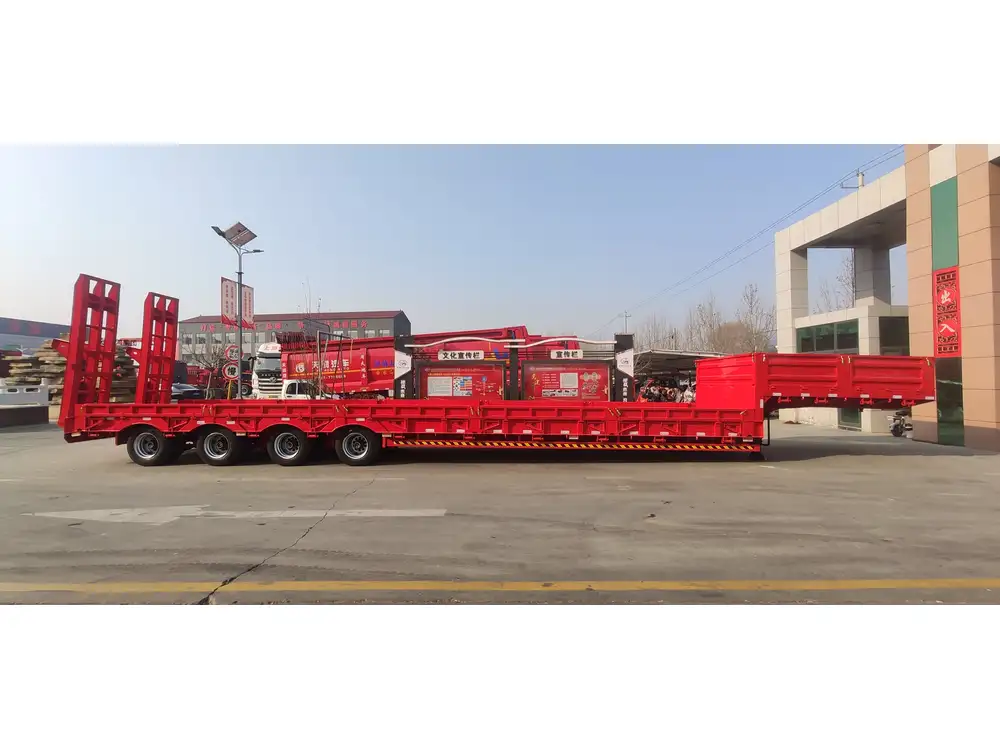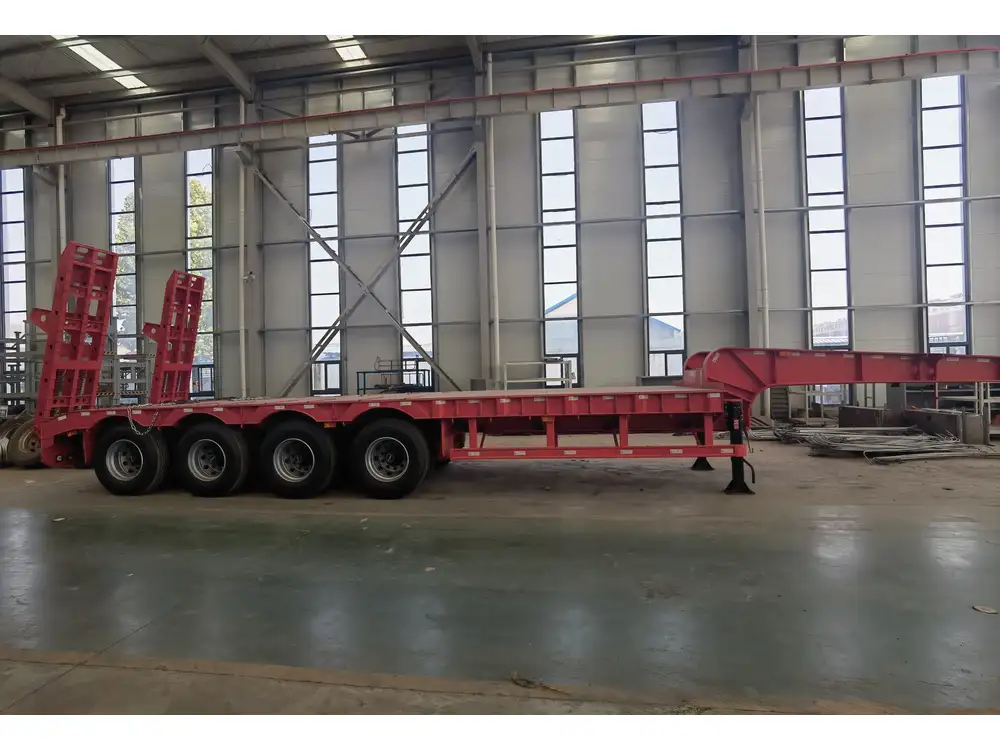When it comes to transportation and logistics, knowledge of your hauling equipment’s specifications can often spell the difference between a smooth operation and logistical headaches. One crucial aspect that stands out in the realm of semi-trailers is the understanding of internal dimensions.
Standard Interior Dimensions: A Comprehensive Overview
Width Specifications
The width of semi-trailers typically varies based on the type and purpose of the trailer. Standard semi-trailers usually have internal widths of 96 inches (8 feet) for general freight. However, specialized trailers may range from 100 inches (8.33 feet) up to 102 inches (8.5 feet). Understanding these dimensions is crucial as they dictate the type of cargo that can be accommodated securely.
| Type of Trailer | Internal Width | Common Use |
|---|---|---|
| Standard Flatbed | 96 inches (8 feet) | General freight |
| Reefer Trailer | 96 inches (8 feet) | Temperature-sensitive goods |
| Dry Van Trailer | 102 inches (8.5 feet) | Standard cargo without restrictions |
| Specialized Trailers | Up to 100 inches (8.33 feet) | Varying types of loads |

Height Considerations
Height inside a semi-trailer can also vary according to the type of load. The standard internal height for a typical semi-trailer is around 110 inches (9.16 feet). For specific cargo types such as palletized freight or bulk commodities, it’s essential to consider taller structures like drop-deck trailers, which can provide a height clearance of up to 12 feet.
| Trailer Type | Internal Height | Use Cases |
|---|---|---|
| Standard Trailer | 110 inches (9.16 feet) | Standard freight |
| High Cube Trailer | Up to 120 inches (10 feet) | Excessive height cargo |
| Lowboy Trailer | 24-30 inches | Heavy equipment transport |
Length Dimensions
The internal length of semi-trailers is another critical number that logistics managers scrutinize. Generally, the length is determined by the trailer’s type and intended use. The average is 53 feet but can vary depending on the state regulations and the design of the trailer itself.
| Trailer Type | Internal Length | Typical Cargo Capacities |
|---|---|---|
| Standard Trailer | 53 feet | Up to 45,000 lbs |
| Double Trailer | 28 feet (per unit) | Mixed cargo |
| Specialty Trailer | Up to 60 feet | Construction equipment, lumber |
Weight Considerations and Capacity
Understanding internal dimensions is one side of the coin; the weight capacity each semi-trailer can handle is just as critical. Weight regulations vary from state to state, but generally, the maximum combined weight for a semi-trailer and its cargo should not exceed 80,000 lbs.
| Trailer Type | Max Weight Capacity | Considerations |
|---|---|---|
| Standard Van | 45,000 lbs | Type of freight and stacking nature |
| Flatbed | 48,000 lbs | Load distribution and securing methods |
| Reefer | 40,000 lbs | Temperature control and weight limits |

Factors Influencing Internal Dimensions
Several factors influence the internal dimensions of semi-trailers, and understanding these can help shippers and logistics managers make informed decisions regarding which types of trailers to utilize for specific jobs.
1. Trailer Type and Design
Every trailer type is designed for specific operational purposes. For instance, a flatbed is generally wider to accommodate a more significant load, whereas a dry van may be narrower due to aerodynamic concerns.
2. State Regulations
Different states impose regulations on the dimensions and weight of semi-trailers. For instance, the width limit in many states is 102 inches, but there are exceptions in special circumstances which can allow for wider loads.

3. Cargo Type
The nature of the cargo being hauled can also dictate the internal dimensions needed. Bulk commodities, machinery, or unusually shaped items may require specialized trailers with specific measurements to ensure that loading and unloading are carried out effectively.
4. Climate Conditions
Certain climates necessitate special trailers, such as reefers for temperature-sensitive goods. The internal dimensions of these trailers are specifically designed to maximize space while ensuring the stability of the temperature inside.
Evaluating Your Needs Based on Dimensions

What to Consider When Choosing a Semi-Trailer
When looking for a semi-trailer to suit your transportation needs, consider the following aspects based on the internal dimensions:
Type of Cargo: Will you be transporting standard goods, or do you require specialized containment?
Frequency of Transport: Assess how often you’ll be moving cargo and the types of loads involved.
Length of Haul: Different types of trailers have varied effects on fuel efficiency and maintenance. Ensure you choose a trailer that can endure the level of wear expected during your routes.
Accessibility Issues: If you haul frequently to loading docks or warehouses with height restrictions, ensure your trailer’s height complies with those limitations.
Tips for Efficient Loading
Know Your Cargo Dimensions: The more precise you are with the dimensions and weight of your cargo, the better your loading strategy will be.
Optimize Weight Distribution: Ensure the load is distributed evenly to prevent potential damage during transit.
Utilize Space Effectively: Make use of vertical space, especially for lighter items that can be stacked, while paying attention to the overall weight allowances.
In Conclusion: Making Informed Decisions
Understanding the internal dimensions of semi-trailers is paramount for optimizing your logistics operation. By analyzing the width, height, and length of your trailer options, it becomes feasible to choose the right semi-trailer for your specific freight needs.

Key Takeaways
Standard internal width is generally 96 inches, while wider options exist.
Internal height can vary extensively, with standard trailers offering 110 inches and some dropping to 24-30 inches for lowboy trailers.
Length typically averages 53 feet for standard trailers, which is essential for accommodating various cargo types.
As always, choosing the right type of semi-trailer revolves around understanding these dimensional specifics while considering freight type, state regulations, and operational needs to refine your logistics processes and ultimately contribute to a successful, efficient transportation strategy.



